You are here
Khudayar-khan palace.
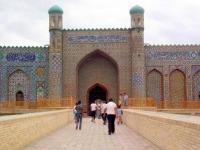
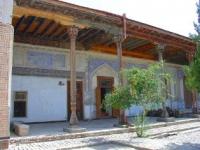
Sights in Kokand.
"The dead will be forgotten, but the victories will remain for centuries"
Genghis Khan. "Golden Horde". Ilyas Esenberlin.
Drive from Kokand to Rishtan.
It is known that each of the khanate’s of the Turan land had its our grand citadel. One of these monuments is the citadel (urda) of the last khan of Kokand Khudayar – khan. In the era of the khanate of Kokand Khudayar-khan.
In the era of the khanate of Kokand (1709 - 1876) several citadels were erected. But for various reasons, they were destroyed before our time and only small part of the Khudayar-khan citadel remained.
As shown in the sources, this citadel of Sayyid Muhammad Khudayar-khan (years of life: 1831 - 1832 was built during 1865 - 1872 on the place of the ruined citadel of Muhammad Ali-khan.
For the construction of the fortress the best artists from Kokand and Bukhara were invited. According to the project of the architect Mir Ubaydullah the building was erected on a hill above the high brick foundation.
In the construction of walls and domes master Mullah Suyarqul, usta Salikh-khoja, Bukharian Fazil-khoja. Veneer and inlay were performed by masters usta Yuldash, usta Fazil Khoja, calligrapher Muhammad Turdi – Ali, ganch works were performed by Muhammad Alim Sirchi (ganch master), and lining works by the master from Rishtan usta Abdullah.
The initial area of Urda was 8 hectares of land; the neighborhood around the perimeter of citadel was surrounded by a fortress with thick walls. On the circumference of the fortress a deep ditch was dug that was filled with water from the river Kukansay.
Originally, the fortress included more than 100 different rooms, outdoor yard and courtyard, and a mosque. The citadel was divided into four parts:
1. Outside palace (fortress),
2. Middle palace,
3. Garden,
4. Indoor palace in a quadrangular layout (68 x 143m).
Each part had a gate built on the same axis with a view to the east. During the colonization much of the premises were destroyed (the outer courtyard, the harem rooms). Currently the walls of the external façade, private hall with a dome, terrace (aivan) and 19 rooms are preserved.
In 1925 the fortress was turned into a museum in which various antique items have been gathered from across the Fergana Valley.
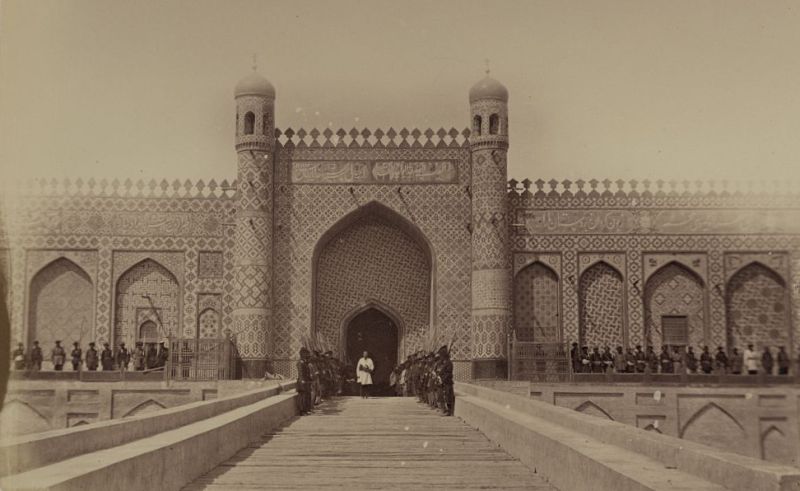
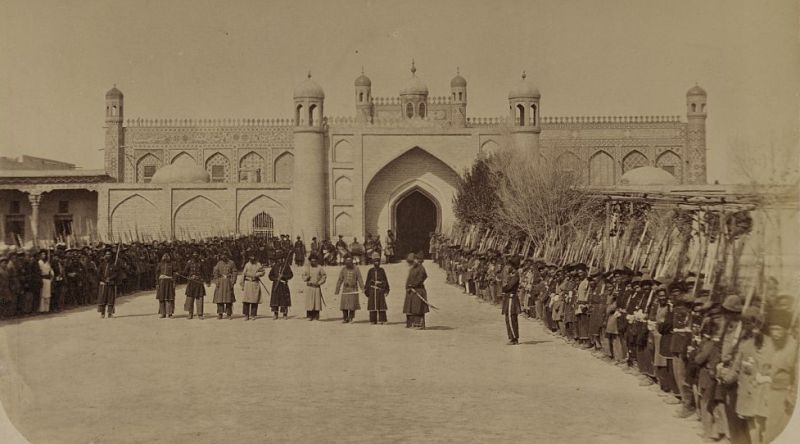
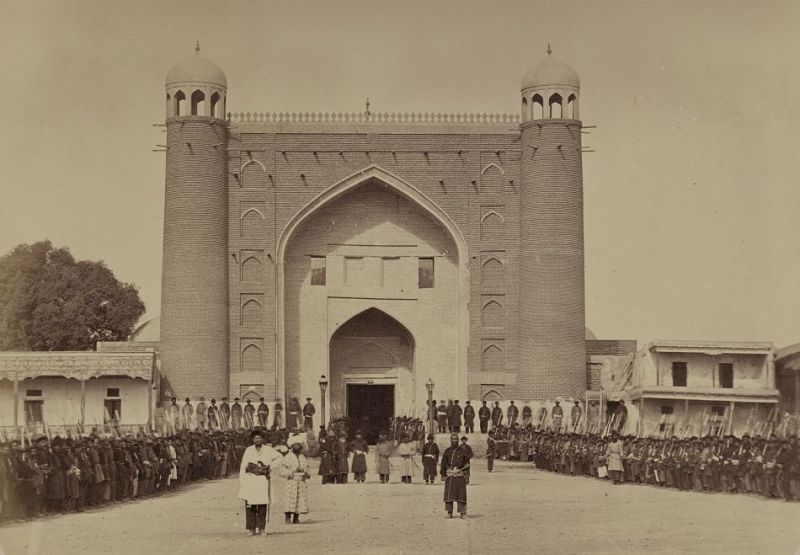
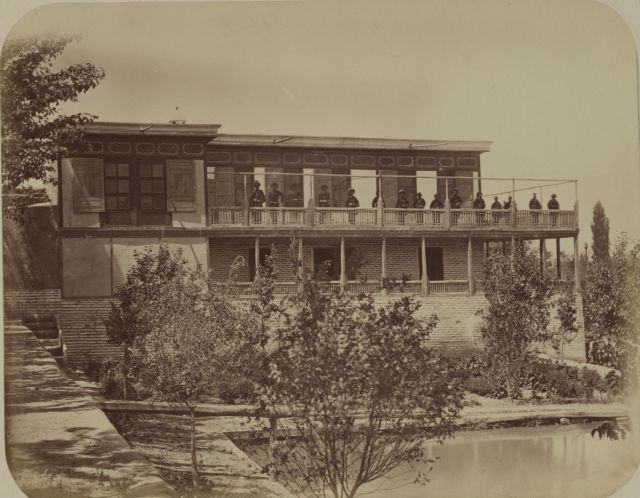
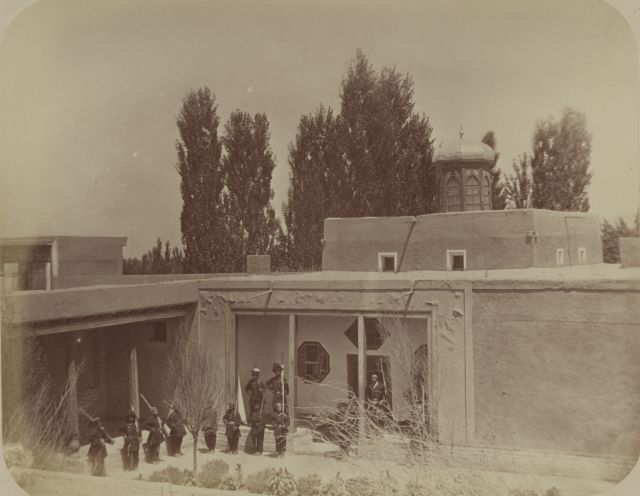
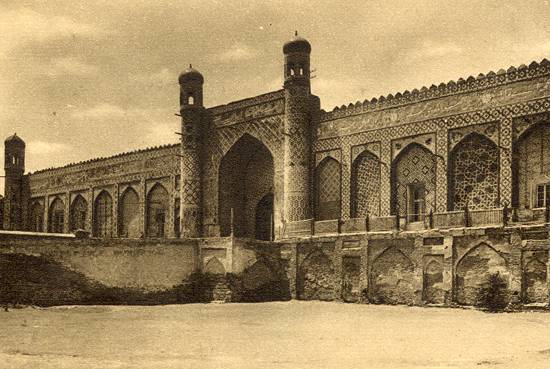
Authority:
http://welcomeuzbekistan.uz
Photos
from Turkestan album. Published in 1872 in St. Petersburg, by order of the first Tashkent Governor-General Konstantin Petrovich von Kaufman. The album included four parts: the archaeological (two volumes), the ethnographic (two volumes), the crafts of the peoples of Central Asia (the trade) and the historical part. The number of photos is more than 1200. Compiled by A. L. Kuhn (1871 - 1872). The collection of materials for a multi-volume publication for more than two years was carried out in the military topographic department of Tashkent, where lithographic parts of each plate were printed. A complete set of all volumes and parts of this book is stored today only in three collections: in the National Library of Uzbekistan in Tashkent, in the V. Lenin State Library in Moscow and in the Library of the US Congress in Washington. Each of the six volumes of the Turkestan Album is a huge folio, upholstered in green leather, 45 by 60 centimeters in size. Each page of the publication contains from one to eight photos, made with the technology of albumen printing (based on egg white). In 2007, the National Library of Congress completed the full digitization of all pages of the Turkestan Album.






